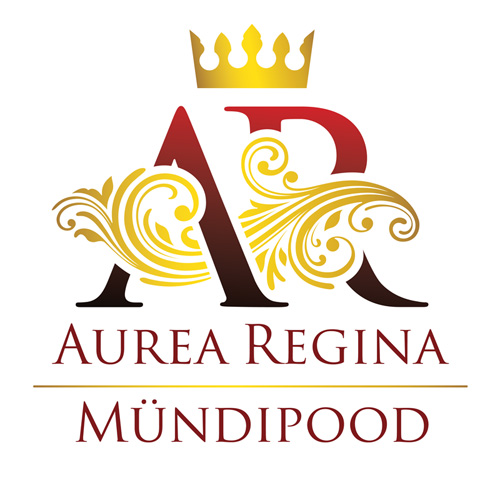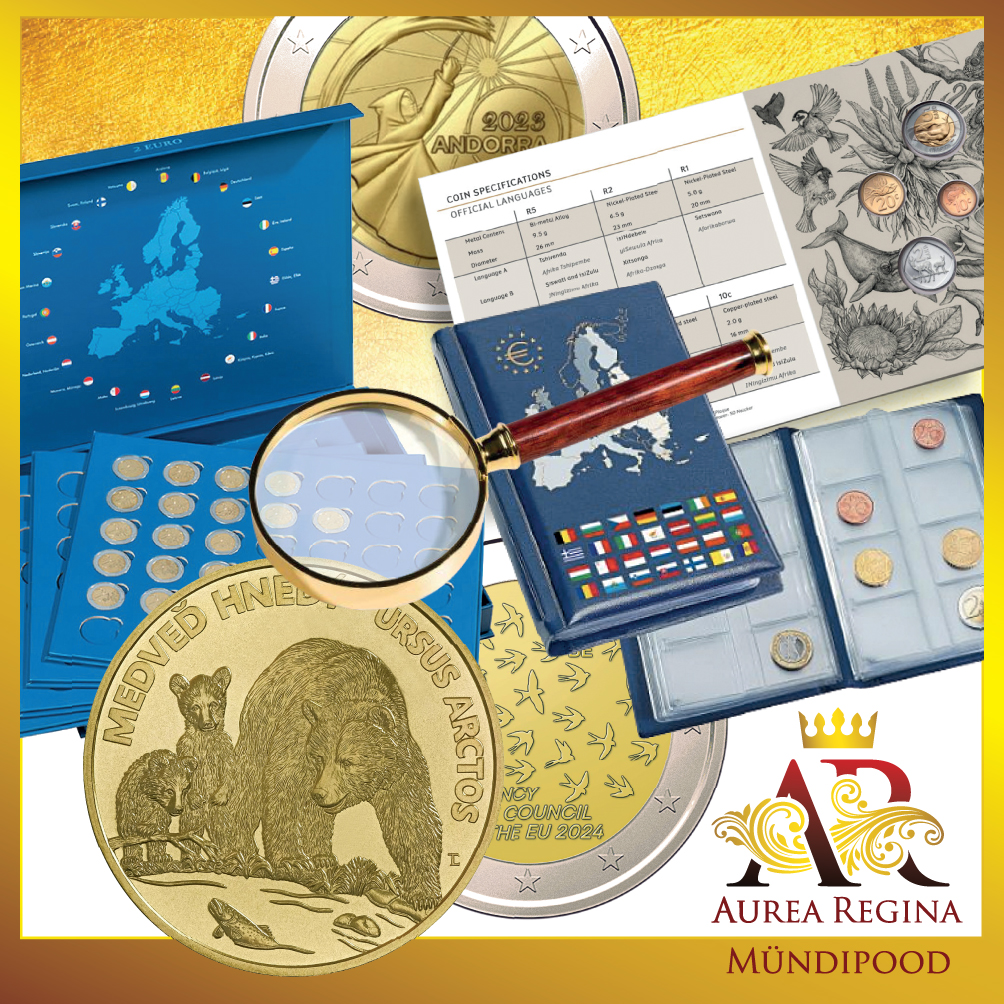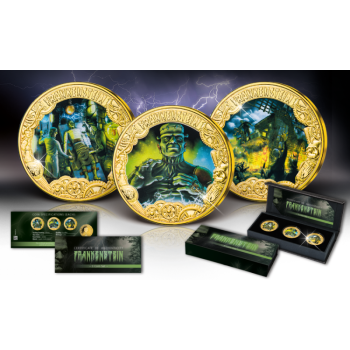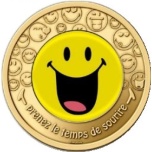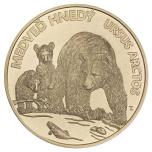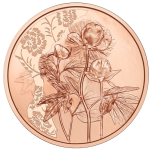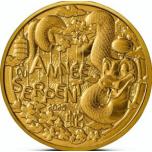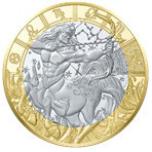FRANKENSTEIN 200th Anniversary Set 3 Gold Plated Coins 1$ Tokelau 2019
Price:
115,00 €
Country: Tokelau
Year: 2019
Face Value: 1 Dollar x 3
Metal; Cupronickel
Weight: 26 g x 3
Diameter: 40 mm
Quality: Prooflike
Mintage: 5.000 pcs
Presentation case
This beautiful Gold plated coin Set is dedicated to one of the most famou novel written by English author Mary Shelley – Frankenstein. The coins have a beautiful colouration, have a wonderful Gold plating, have a Proof quality and come in an elegant presentation case, along with the Certificate of Authenticity. Limited mintage to 5.000 pieces worldwide.
Year: 2019
Face Value: 1 Dollar x 3
Metal; Cupronickel
Weight: 26 g x 3
Diameter: 40 mm
Quality: Prooflike
Mintage: 5.000 pcs
Presentation case
This beautiful Gold plated coin Set is dedicated to one of the most famou novel written by English author Mary Shelley – Frankenstein. The coins have a beautiful colouration, have a wonderful Gold plating, have a Proof quality and come in an elegant presentation case, along with the Certificate of Authenticity. Limited mintage to 5.000 pieces worldwide.
Similar products
Metal: NordicGold
Weight: 15,80 g
Diameter: 34 mm
Mintage: 10 000
In 2022, Smiley celebrates its fifth decade of smiles and optimism.
The emblematic yellow, round face of the brand was born on 1st, January 1972 in France, when journalist Franklin Loufrani used this infectious smile in the newspaper France-soir in order to highlight stories which brought positive news and cheered up French people’s spirit. This operation, called « Take the time to smile » was an immediate success.
In 1996, the logo is relaunched and developed in other forms : a new 3D version is created and new expressions are added in. Nowadays, from the smiley to the emoticon, smiling takes multiple forms, becoming a representative of cheerfulness !
Since the creation of the yellow smile in 1972, Smiley diversified the range of its expressions, conveying over a hundred émotions. From the smiley to the emoticon, smiling takes multiple forms.
Each mini-medal highlights a particular emotion : love, gratitude, gluttony, joy and laughing.
The medals are packaged in a coloured packaging, to treat to someone or to yourself.
Weight: 15,80 g
Diameter: 34 mm
Mintage: 10 000
In 2022, Smiley celebrates its fifth decade of smiles and optimism.
The emblematic yellow, round face of the brand was born on 1st, January 1972 in France, when journalist Franklin Loufrani used this infectious smile in the newspaper France-soir in order to highlight stories which brought positive news and cheered up French people’s spirit. This operation, called « Take the time to smile » was an immediate success.
In 1996, the logo is relaunched and developed in other forms : a new 3D version is created and new expressions are added in. Nowadays, from the smiley to the emoticon, smiling takes multiple forms, becoming a representative of cheerfulness !
Since the creation of the yellow smile in 1972, Smiley diversified the range of its expressions, conveying over a hundred émotions. From the smiley to the emoticon, smiling takes multiple forms.
Each mini-medal highlights a particular emotion : love, gratitude, gluttony, joy and laughing.
The medals are packaged in a coloured packaging, to treat to someone or to yourself.
9,90 €
Face value: 5 €
Diameter: 34 mm
Weight: 19.1 g
Metal: Brass
Mintage: 45,000
The obverse of this euro collector coin is dominated by the head of a brown bear in profile. Centrally positioned above the head is the Slovak coat of arms. The denomination and currency ‘5 EURO’ appear along the lower left edge. Inscribed along the upper edge are the name of the issuing country and the year of issuance: ‘SLOVENSKO 2023’. At the right edge is the mint mark of the Kremnica Mint (Mincovňa Kremnica), consisting of the letters ‘MK’ placed between two dies.
Reverse:
On the reverse is a depiction of a female bear and her two cubs hunting fish. Inscribed along the upper edge are the Slovak name for the brown bear ‘MEDVEĎ HNEDÝ’ and the animal’s scientific name ‘URSUS ARCTOS’. At the lower right edge are the stylised initials ‘TL’, referring to the coin’s designer Tomáš Lamač.
The brown bear is Slovakia’s largest predator. It has a stocky body, small eyes and ears, a short tail, pronounced claws, and thick fur that is 8 to 12 cm long and comes in a wide range of shades from light brown to almost black. The adult male can weigh up to 350 kg. Brown bears in Slovakia are concentrated in the central, northern and north-eastern mountain areas. The brown bear is an omnivore that prefers to live in mixed and coniferous forests. Its diet is 90% vegetable matter with the remaining 10% consisting of carrion, smaller animals, insects and, occasionally, sick or injured hooved game. Bears hibernate in dens from around early November to April. Female bears and their cubs are the first to enter the dens and the last to emerge from them. Male bears seek out females only during the mating season, usually from the end of April to the beginning of August. The cubs are born during January and February in the safety of the winter den. At birth they are blind, have short fur and weigh less than 500 g. Bears in the wild can live to be more than 30 years old.
Diameter: 34 mm
Weight: 19.1 g
Metal: Brass
Mintage: 45,000
The obverse of this euro collector coin is dominated by the head of a brown bear in profile. Centrally positioned above the head is the Slovak coat of arms. The denomination and currency ‘5 EURO’ appear along the lower left edge. Inscribed along the upper edge are the name of the issuing country and the year of issuance: ‘SLOVENSKO 2023’. At the right edge is the mint mark of the Kremnica Mint (Mincovňa Kremnica), consisting of the letters ‘MK’ placed between two dies.
Reverse:
On the reverse is a depiction of a female bear and her two cubs hunting fish. Inscribed along the upper edge are the Slovak name for the brown bear ‘MEDVEĎ HNEDÝ’ and the animal’s scientific name ‘URSUS ARCTOS’. At the lower right edge are the stylised initials ‘TL’, referring to the coin’s designer Tomáš Lamač.
The brown bear is Slovakia’s largest predator. It has a stocky body, small eyes and ears, a short tail, pronounced claws, and thick fur that is 8 to 12 cm long and comes in a wide range of shades from light brown to almost black. The adult male can weigh up to 350 kg. Brown bears in Slovakia are concentrated in the central, northern and north-eastern mountain areas. The brown bear is an omnivore that prefers to live in mixed and coniferous forests. Its diet is 90% vegetable matter with the remaining 10% consisting of carrion, smaller animals, insects and, occasionally, sick or injured hooved game. Bears hibernate in dens from around early November to April. Female bears and their cubs are the first to enter the dens and the last to emerge from them. Male bears seek out females only during the mating season, usually from the end of April to the beginning of August. The cubs are born during January and February in the safety of the winter den. At birth they are blind, have short fur and weigh less than 500 g. Bears in the wild can live to be more than 30 years old.
14,90 €
Quality: Uncirculated
Face Value: 10 Euro
Diameter: 32 mm
Material: Copper
Total Weight: 15 g
Mintage: 130 000
Without capsule
In England the peony is sometimes referred to as the ‘rose royale’ and the Chinese word for peony means ‘the most beautiful’. Peonies have been painted by many European artists and the opulent beauty of the peony has long been a popular subject in Chinese and Japanese literature, painting and decoration. A Chinese legend has it that a capricious empress commanded all the flowers in her garden to blossom at the same time. All acquiesced apart from the peony. Annoyed by the flower’s refusal, the empress banished it to the coldest reaches of the empire, yet despite the inhospitable environment, the peony thrived. The empress, duly impressed, allowed the peony to return, declaring it the ‘queen of all flowers’.
Face Value: 10 Euro
Diameter: 32 mm
Material: Copper
Total Weight: 15 g
Mintage: 130 000
Without capsule
In England the peony is sometimes referred to as the ‘rose royale’ and the Chinese word for peony means ‘the most beautiful’. Peonies have been painted by many European artists and the opulent beauty of the peony has long been a popular subject in Chinese and Japanese literature, painting and decoration. A Chinese legend has it that a capricious empress commanded all the flowers in her garden to blossom at the same time. All acquiesced apart from the peony. Annoyed by the flower’s refusal, the empress banished it to the coldest reaches of the empire, yet despite the inhospitable environment, the peony thrived. The empress, duly impressed, allowed the peony to return, declaring it the ‘queen of all flowers’.
25,00 €
Denomination: 0,25 €
Alloy: Cupro-nickel Nordicgold
Weight: 15,8 g
Diameter: 34 mm
Quality Brilliant Uncirculated
Year: 2025
In Chinese culture, the snake is the most enigmatic animal of the zodiac.
Natives of the Snake sign are rather secretive and cautious. They are renowned for their wise and calm nature.
According to legend, during the race to select the animals of the zodiac, the cunning serpent secretly slipped onto the horse's hoof and took sixth place. This story reflects his strategic intelligence.
Surrounded by plum blossom, a popular symbol in Chinese history, art, and lanterns, the snake depiction appeals to children. The inscription 'Year of the snake’ and the yeardate appear at the center of the coin. The ideogram of the snake appears below.
On the reverse side, all the animals of the Chinese zodiac are drawn in a cartoon-like way around the Ying and Yang symbol. A complete cycle of the Chinese zodiac will be composed from 2018 to 2029. Each of these twelve years features an animal from this calendar. The face value is visible in the center of the coin as well as the symbol "RF".
Alloy: Cupro-nickel Nordicgold
Weight: 15,8 g
Diameter: 34 mm
Quality Brilliant Uncirculated
Year: 2025
In Chinese culture, the snake is the most enigmatic animal of the zodiac.
Natives of the Snake sign are rather secretive and cautious. They are renowned for their wise and calm nature.
According to legend, during the race to select the animals of the zodiac, the cunning serpent secretly slipped onto the horse's hoof and took sixth place. This story reflects his strategic intelligence.
Surrounded by plum blossom, a popular symbol in Chinese history, art, and lanterns, the snake depiction appeals to children. The inscription 'Year of the snake’ and the yeardate appear at the center of the coin. The ideogram of the snake appears below.
On the reverse side, all the animals of the Chinese zodiac are drawn in a cartoon-like way around the Ying and Yang symbol. A complete cycle of the Chinese zodiac will be composed from 2018 to 2029. Each of these twelve years features an animal from this calendar. The face value is visible in the center of the coin as well as the symbol "RF".
9,90 €
Issuing Country: France
Face value: 5 €
Metal: Copper/Nickel
Diameter: 29 mm
Quality: B.U.
Mintage: 25 000
The wheel of the zodiac signs is engraved on the coin's gold-colored crown. One sign stands out from the background because it is larger than the others and has a sandblasted background, different from the smoother one of the others. It is the symbol of Sagittarius. Part of the wheel is hidden by flames, a reminder of this sign's element, fire. A centaur armed with a bow and arrow, ready to be shot, rears up in the center of the composition. In the background, the starry sky features the constellation Sagittarius.
Face value: 5 €
Metal: Copper/Nickel
Diameter: 29 mm
Quality: B.U.
Mintage: 25 000
The wheel of the zodiac signs is engraved on the coin's gold-colored crown. One sign stands out from the background because it is larger than the others and has a sandblasted background, different from the smoother one of the others. It is the symbol of Sagittarius. Part of the wheel is hidden by flames, a reminder of this sign's element, fire. A centaur armed with a bow and arrow, ready to be shot, rears up in the center of the composition. In the background, the starry sky features the constellation Sagittarius.
19,00 €
